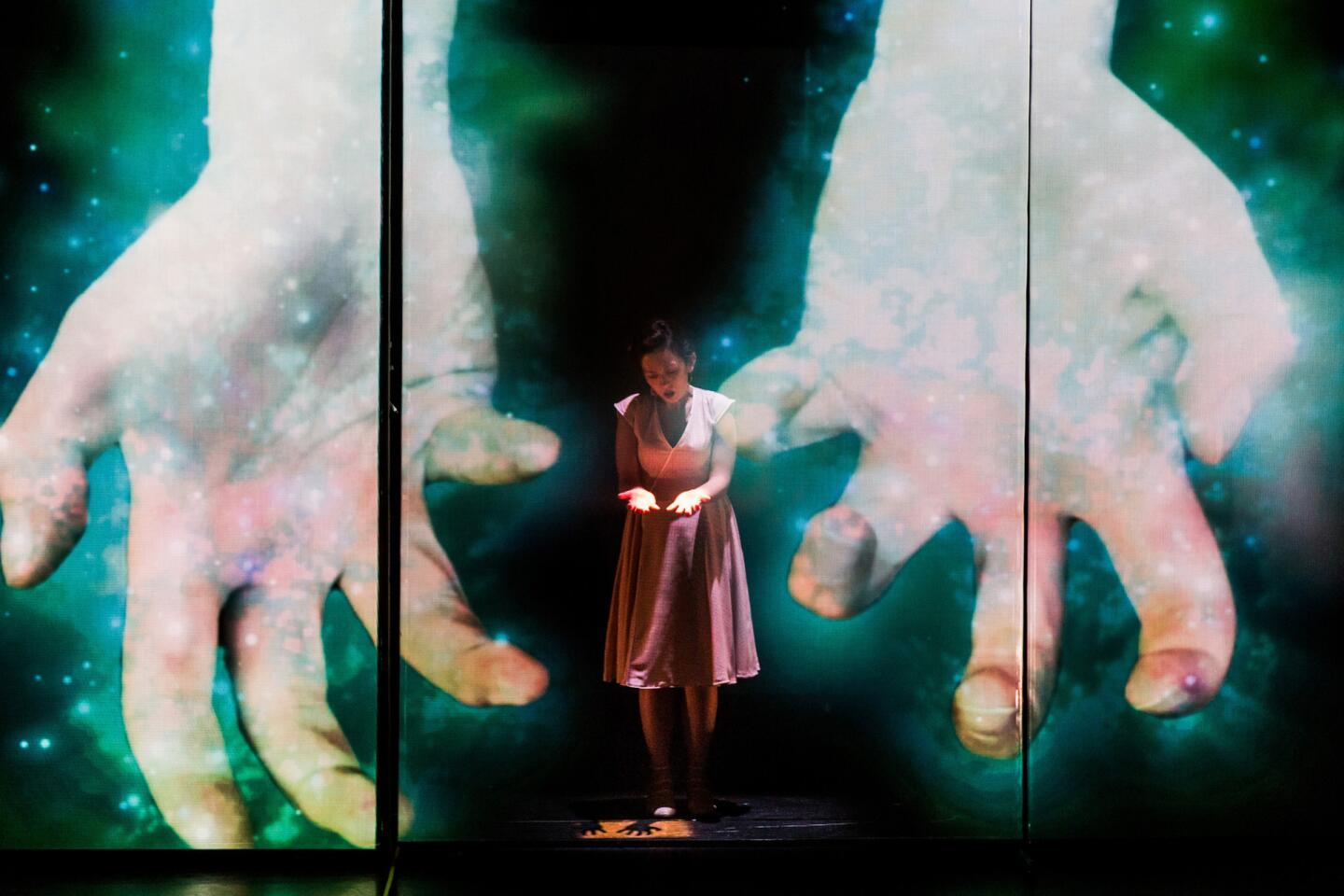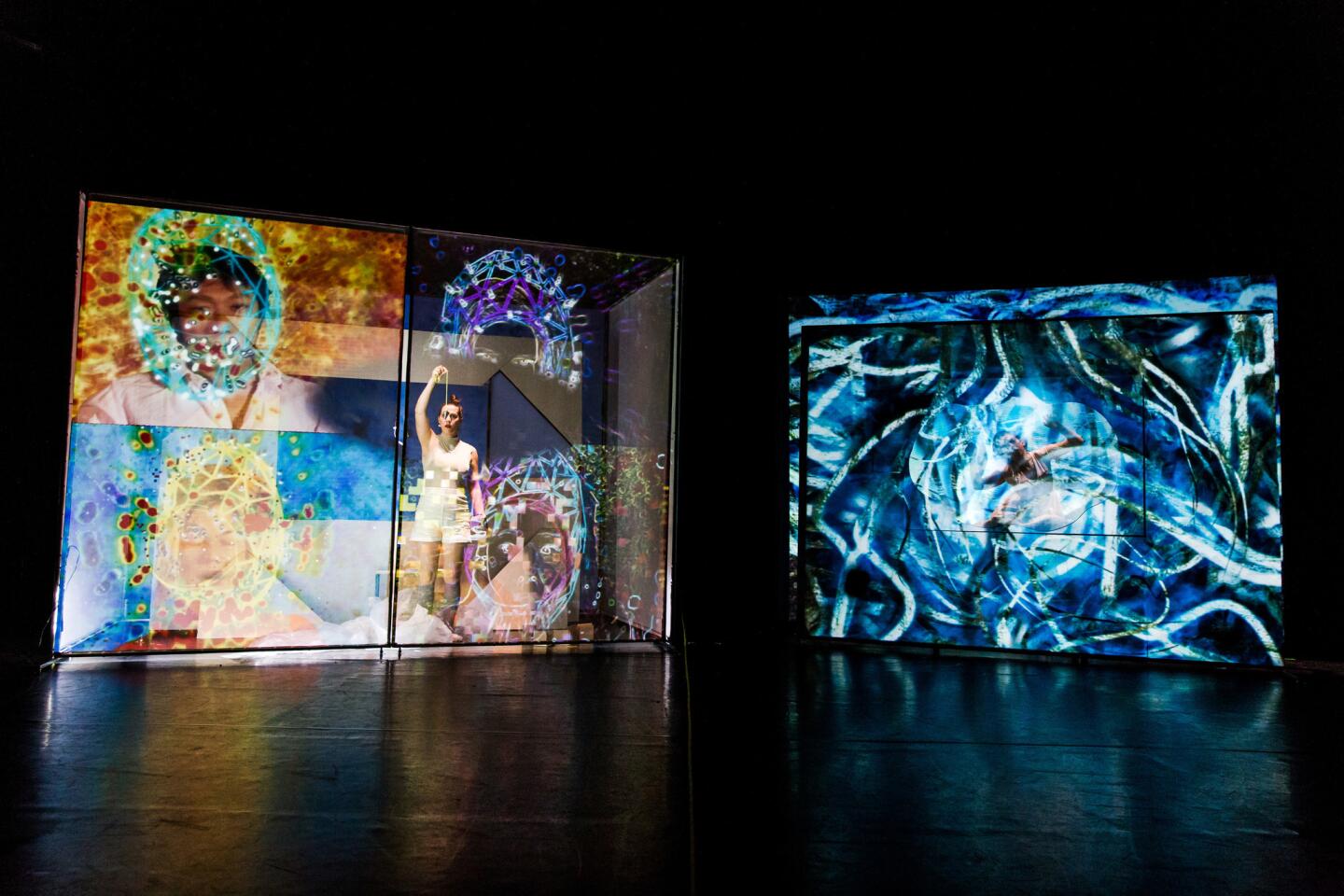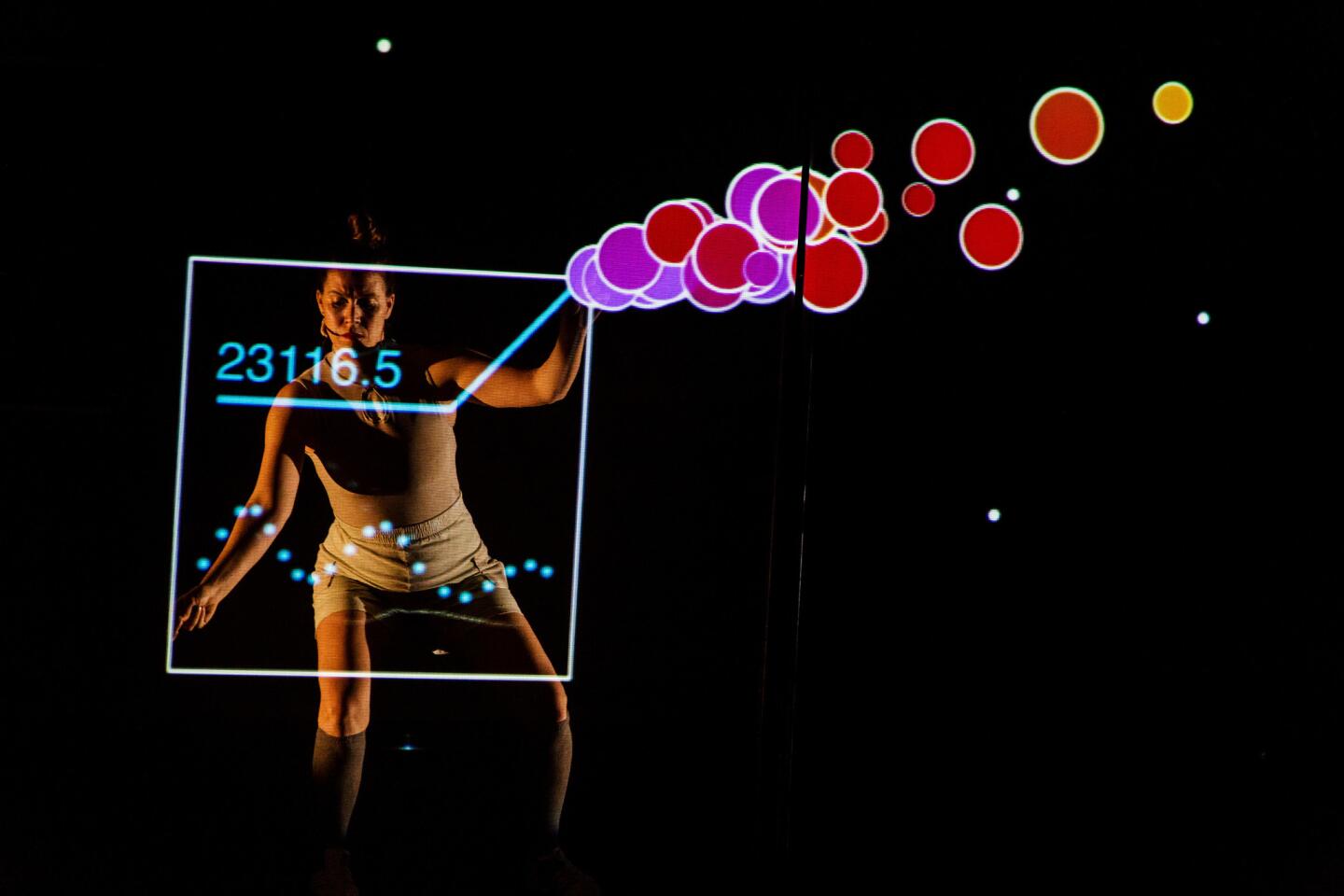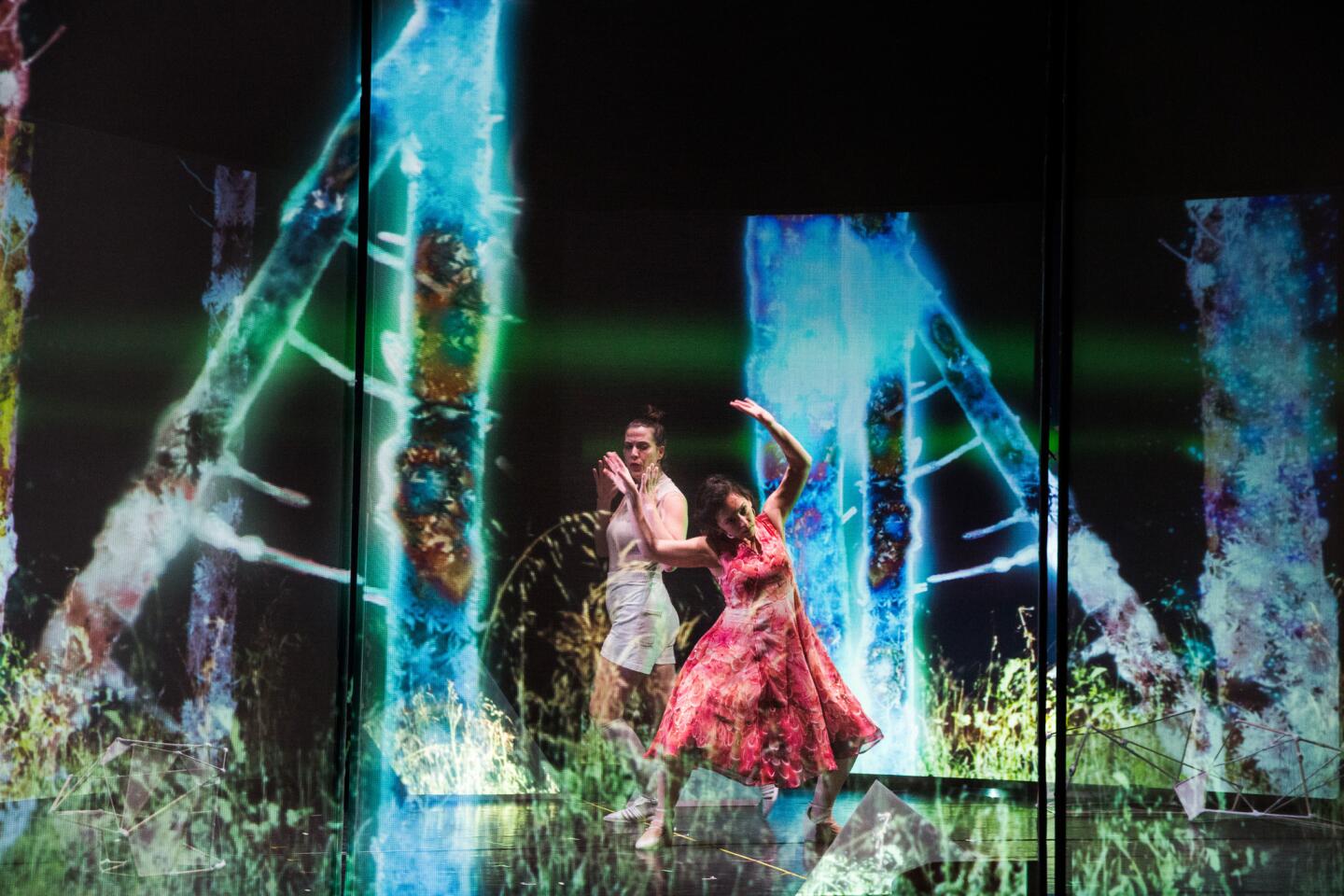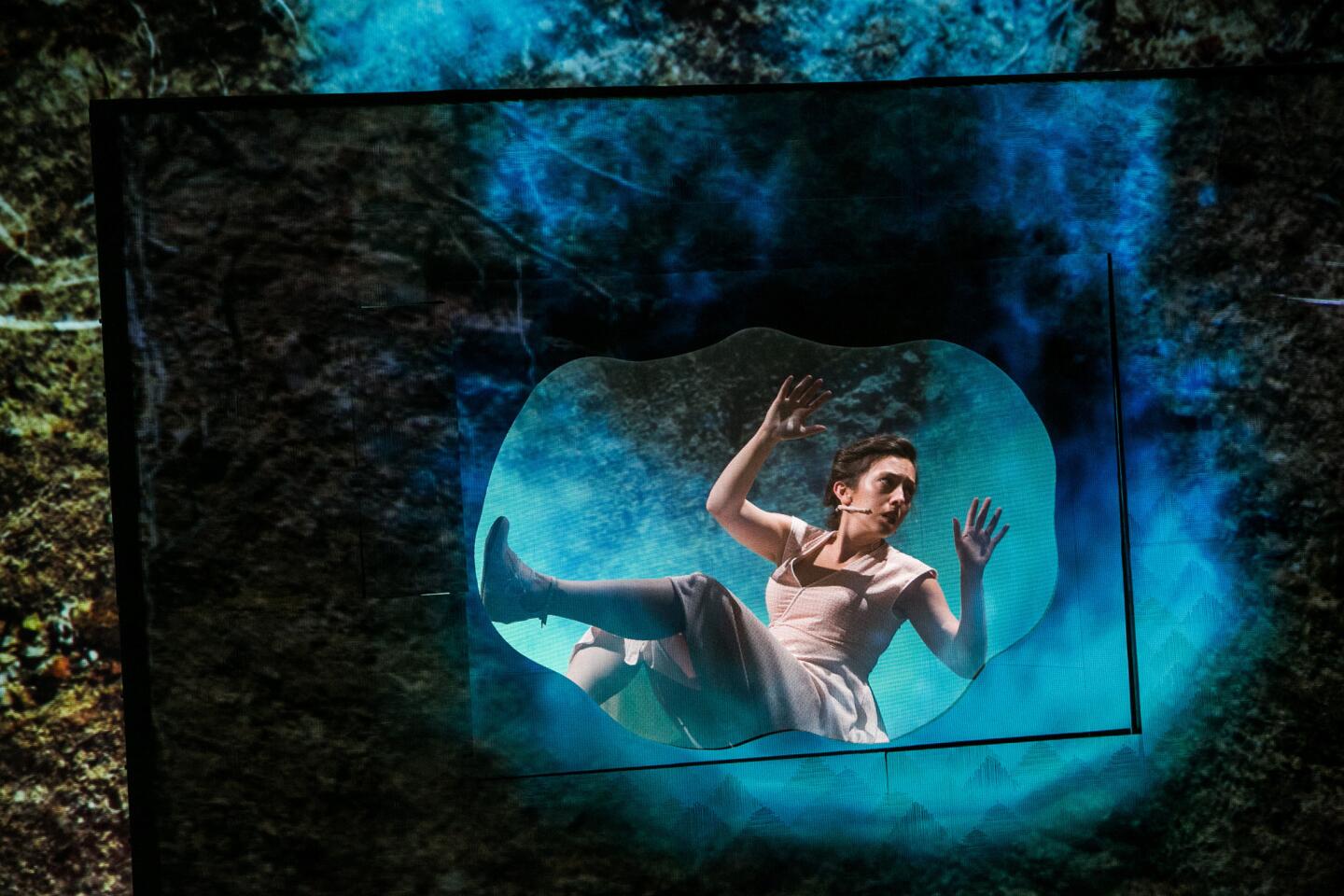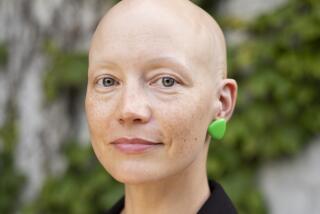Review: In ‘Half Life,’ Cloud Eye Control tries to see the unseen
Japan’s national confidence has clearly suffered lately, beginning with the 2011 Fukushima Daiichi nuclear disaster and followed by the current economic recession and the air bag scandal. But dread, in Japan, is meant to remain under a typically exquisite surface.
Japanese is not a language intended for expressing emotion in its vocabulary or uninflected speech. Politeness and mindfulness envelope the culture.
Purchase a package of cough drops in a convenience store: It will be wrapped delightfully, and you will be treated like a business class passenger by the clerk.
But when something goes wrong, direct response can be more troubling than cover-up.
It is this emotional half-life, when confronted with a tragedy on the scale of the Fukushima nuclear meltdown and tsunami, that fascinates the young Los Angeles theater collective Cloud Eye Control in its latest production, “Half Life,” which opened at REDCAT on Thursday night and runs through Sunday.
The multimedia resources of Cloud Eye Control — founded by animator and designer Miwa Matreyek, composer and singer Anna “Oxygen” Huff and director Chi-wang Yang — are elaborate. “Half Life” functions as a series of art installations. With projections on movable scrims and rear screens, fascinating 3-D effects are created that are immersive without seeming completely real.
Somehow both flatness and a spatial sense are thus simultaneously conveyed. The artifice of theater is not hidden, and the natural world is revealed through the lens of paranoia.
The images include a cityscape, an apartment in a tall building, a forest, a slowly lapping tidal wave and a futuristic medical laboratory. The performers on stage are two women, A-ko (Jenny Greer) and B-ko (Anna Oxygen), who sing and pantomime. Their ordinary lives are transformed by catastrophe, but much of that transformation is under the surface and quietly biological. We see, from animated charts and auras, chemistry in shadowy action.
A-ko and B-ko sing in flat, rarely inflected, not especially well-trained voices. Two musicians, Robert Barber and David Scott Stone, stand to the side of the stage. The texts the two actresses sing are not always distinct. They may tell us they are beginning to experience something, but that becomes audibly blurred.
What we do witness — healthy, contented living and the maintaining of tidy apartments — becomes disturbed by the mysterious presence of radiation. A woman touches an animated butterfly fluttering in on the scrim, and it falls in a trail of smoke like an airplane crashing. Flocks of dying butterflies and birds follow in its wake. In a beautifully effective underwater scene, schools of fish lose their bearing.
There are no specific references in “Half Life” to Fukushima or particularly to Japan. It could be anyplace. A-ko and B-ko have no apparent nationality or personality. They move as the music moves, unthinkingly. Their half-life is the life under the surface.
The most memorable projection is that of a large pair of eyes on the scrim. They are closed, yet the movements of the eyelids and eyebrows prove remarkably expressive, seeming to tell us more than the eyes themselves might.
When the eyes open, the lenses become like windows you can’t see into. A recurring image is a building with shades on the windows that open and close. Eventually you might wonder whether you can ever know what goes on behind anything at all. Raindrops falling on lily pads can be a beautiful Japanese image. But when they fall in “Half Life,” they bring radiation.
Cloud Eye Control is most effective when it is all clouds and eyes and out of control. Anxiety can bring awareness. “My heart is beating to the rhythm of my thoughts,” a woman sings late in the show.
The short production ends with a consoling, out-of-place folk song, like pantomimes of old. To the promise of the return of confidence. To the expectation that when the rain next falls on Fukushima, it will nourish rather than irradiate. But will it?
More to Read
The biggest entertainment stories
Get our big stories about Hollywood, film, television, music, arts, culture and more right in your inbox as soon as they publish.
You may occasionally receive promotional content from the Los Angeles Times.

